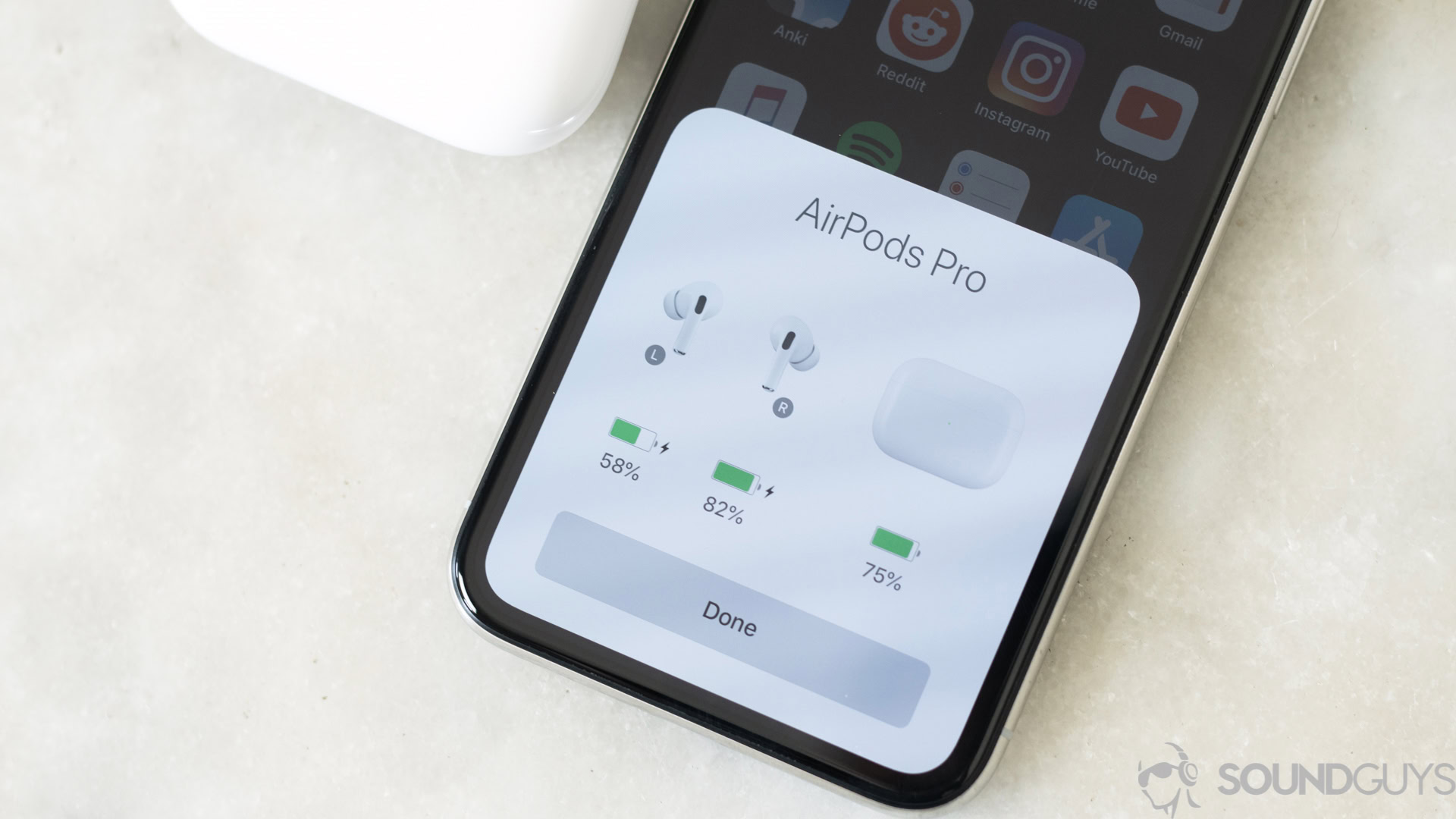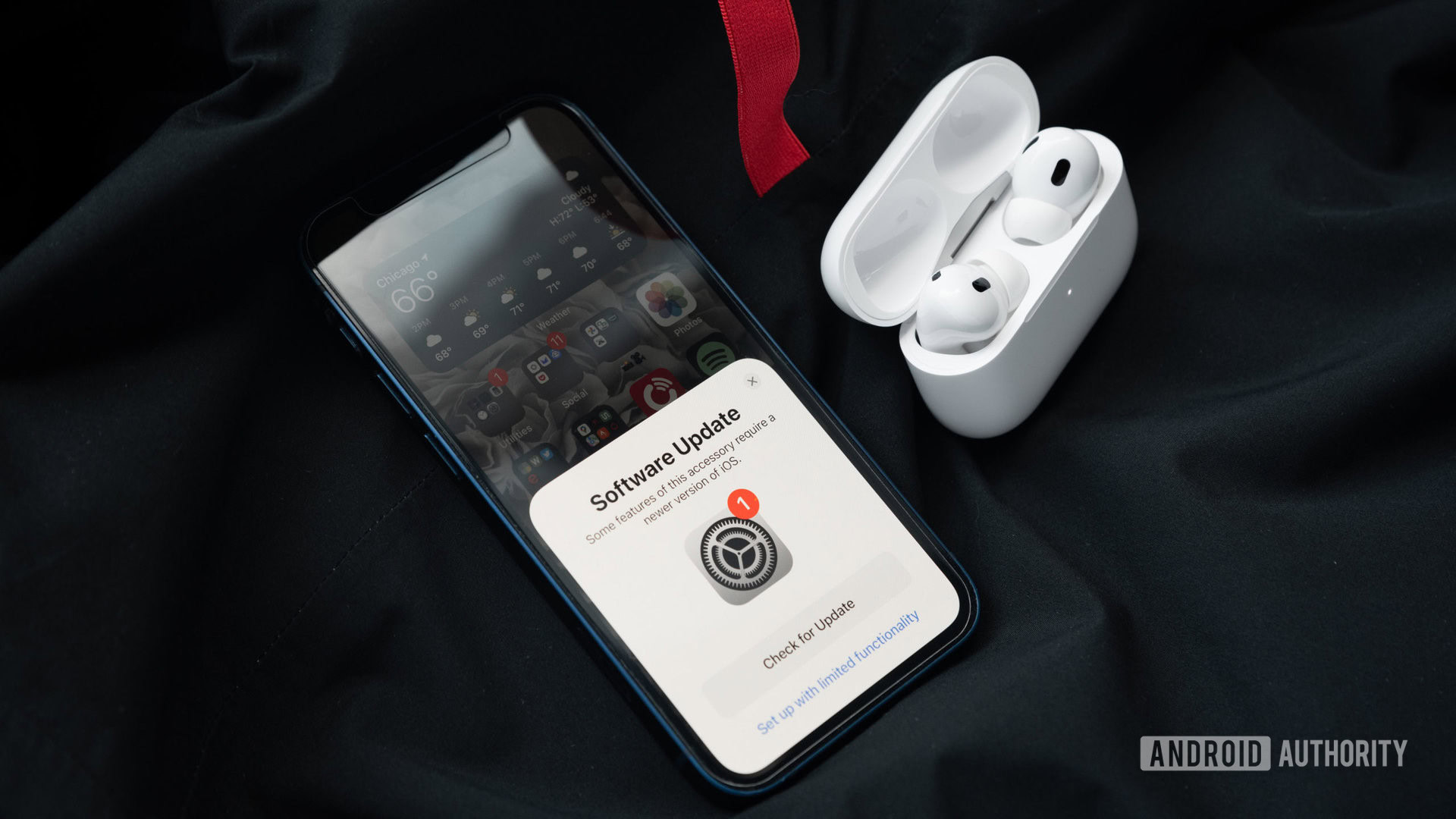Affiliate links on Android Authority may earn us a commission. Learn more.
AirPods microphone not working? Here's how to fix it
Published onFebruary 26, 2025
We’re not going to mince words — if you’re reading this, there’s a reasonable chance that one or more of the microphones on your AirPods are broken. However, if your AirPods microphone is not working, you can try several troubleshooting steps that might be simpler than spending money at an Apple Store.
QUICK ANSWER
Assuming your AirPods are charged and connected, you can try tactics like rebooting your devices, flipping Bluetooth and/or Automatic Ear Detection off and on, and installing all available software and firmware updates. You should also clean your AirPods and check their microphone settings. If you're still unsuccessful, you can try resetting your AirPods, but after that, you'll need to talk to Apple support.
How to fix AirPods microphone that’s not working
Except for the final two options, which are a little more drastic, the steps below can be tried in any order you like. While some might seem obvious, it’s worth trying simple fixes before using Apple support or buying new headphones.
Charge your AirPods

Don’t worry, it happens to the best of us — thinking our headphones are good to go, but suddenly realizing that we skipped charging for one too many workdays or workouts. Remember, lithium batteries continue to drain even when they’re not being used, albeit very slowly.
You can check AirPods’ battery life by bringing them close to an Apple mobile device and opening the case. Check your device’s Batteries widget if they’re already on your ears. Of course, if your headphones are fully depleted, you won’t see any on-device info.
Put your AirPods back in their case
This is unlikely to do much, but putting your AirPods back in their case for 30 seconds could force a state change that “wakes up” their microphones.
Toggle Bluetooth off and on again
The audio pathways in iOS and iPadOS can be…eccentric. However, if you force a Bluetooth audio device to reconnect, it might resume working properly. Go to Settings > Bluetooth and flip the toggle off and on. You can try the same on a Mac by going to the Apple menu > System Settings > Bluetooth.
Toggle Automatic Ear Detection off and on again
In general, ear detection is a great feature of AirPods and many other modern headphones, saving the trouble of pausing and restarting playback when you need to talk to someone. But it could be that your AirPods aren’t kicking back into gear when they’re supposed to. If so, you might try going to Settings > [your AirPods’ name here] and toggling Automatic Ear Detection off and on again. Your AirPods must be switched on and connected for these menu items to appear.
Check microphone settings
A relatively unknown feature of AirPods is that with earbud models (not the Max, in other words,) you can force them to prefer the left or right bud for mic input. The default is automatic switching.
To ensure you’ve got the configuration you need, go to Settings > [your AirPods’ name here] > Microphone and choose between Automatically Switch AirPods, Always Left AirPod, or Always Right AirPod.
Update software and firmware

While unlikely, it could be that a firmware glitch is causing your AirPods microphone to stop working. There are ways to check your firmware version and force an AirPods update if one is available. First, insert your AirPods into their case, then close the lid and wait a few seconds. Open the lid, let the AirPods connect to an iOS device or Mac, then leave them alone for a while.
It’s also worth updating iOS, iPadOS, watchOS, and/or macOS. Despite Apple’s old “it just works” mantra, the company regularly squashes bugs and tweaks compatibility. Some bugs are impossible to predict in an increasingly complex tech landscape.
Clean your AirPods
One or more mic inputs may be blocked if your AirPods are filthy. Note that there’s a specific way of safely cleaning AirPods, and it’s important to follow this to avoid damaging the microphones or creating blockage where there wasn’t any before. Avoid soap, but use lint-free cloths, paper towels, adhesive putty, soft-bristled paintbrushes and toothbrushes, and cotton swabs. Just be mindful not to push dirt further into crevices.
Restart connected devices
Sometimes, restarting an iPhone, iPad, or Mac may reset things behind the scenes in a way that resolves audio problems. Ever notice that your iPhone runs slightly smoother after a reboot? Similar concept.
Reset your AirPods
This is the first of our “drastic” options, but resetting AirPods doesn’t hurt much. It’s extremely easy to re-pair, and all you need to do after that is ensure settings like volume and noise cancellation are back the way you prefer. Once your AirPods are associated with your Apple ID, you can switch audio between Apple devices with zero effort.
Contact Apple support
If you’ve tried all of the previous steps without success, that suggests a hardware or software issue that only Apple or an authorized repair outlet can resolve. Visit Apple’s support website, or book an appointment at an Apple Store or third-party service shop.
If you’re not covered under AppleCare, be prepared to pay for repairs, assuming they’re possible. AirPods aren’t engineered to be fixed, so you’ll likely be given a replacement or (if you’re out of warranty) have to pay for a replacement yourself. Short of the very costly AirPods Max, it may make more sense to upgrade to the latest AirPods or find another highly-rated earbud brand.